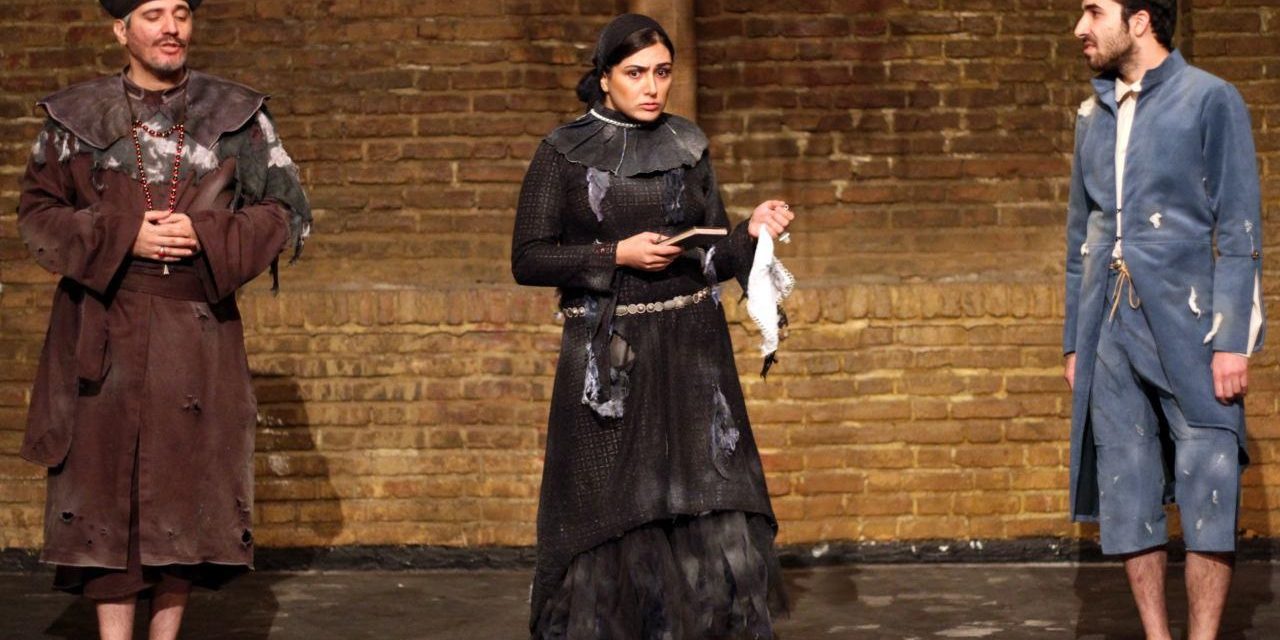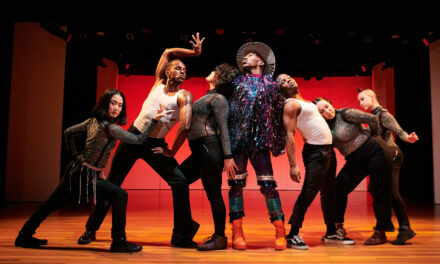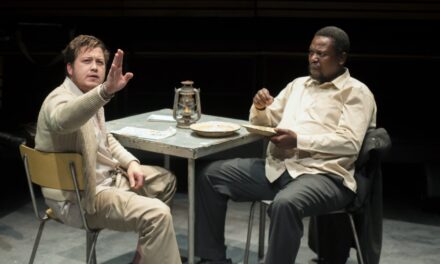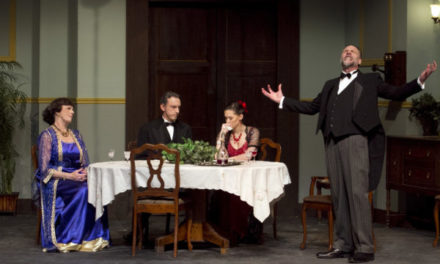The Play Based on The Duchess of Malfi can be regarded as outstanding among tens of performances in Tehran theaters during the month of October 2016. As the title points out, the play is based on John Webster’s The Duchess of Malfi, a Jacobean tragedy which is considered by most critics as Webster’s finest work. The play directed by Mohammad Rezaei Rad appears to be a modern adaptation of the British drama: it employs Brechtian techniques of lighting, live music, and chorus in the background. There is a huge chandelier hanging from the ceiling which sharpens and dims the light all through the play. In the catastrophic scene of the Duchess’ murder, the lighting is changed at the request of a character. The live music is mainly comprised of Rock instrumental pieces. Other elements of modern lifestyle are inserted into the play, an example of which is the masque scene which is performed in the form of a contemporary party. Fusion of old and modern elements could be a strategy to go beyond the limits of time and place and generalize the action and theme of the play to all times and places.
The play takes three and a half hours, long enough to make the audience exhausted and restless, but fast-rhythm action, lively performance of actresses and actors and quick changes of scenes and props create such a colorful experience for the audience that makes them almost lose track of time.
One major characteristic which empowers the play’s artfulness is bringing innovation and creativity into the original Renaissance drama. Inserting dark sarcasm and adding humorous touches convert the Renaissance tragedy to a tragicomedy, aggravating the bitter tragedy of the Duchess’ life and destiny. The modern audience often gets affected more by a shocking irony or bitter sarcasm than by the direct depiction of pain and disaster. An impressive instance of this is the childbirth scene. The torn and fragmented child given birth by a mad man intensifies the dark horror and macabre violence of the original play, representing the fragmented and chaotic world in which love and innocence are sacrificed, and the loss of integrity in a life driven by madness and greed.
Another example of the play’s creativity is the smart use of stage sets to circumvent censorship in Iran’s theater. Using a very long transparent curtain between the lovers during the love confession and marriage proposal scene depicts the most potentially-erotic action of the play.
Also, the costumes instead of representing social status of characters are all ragged and torn, all characters are barefoot, and no dignity in the nobility is seen as if the rich and the poor are the same.
One fundamental question facing the audience is the reason such a Renaissance tragedy about love is chosen to be presented to the contemporary audience. In this play, the heroine follows her natural instinct to love and to be loved regardless of her social status and traditional biases. In doing so, she falls victim to his brothers whose sole ambition in life is the accumulation of wealth and power. The Duchess symbolizes the dream of freedom and individual choice which is suppressed by the dark desire for selfish power represented by her brothers. She sacrifices her life to stay as an authentic individual.
The play is written by Naghmeh Samini and Mohammad Rezaei Rad. It was staged for a month in the venue of Tehran Independent Theater, and received many positive views from critics and general audiences.
This post was written by the author in their personal capacity.The opinions expressed in this article are the author’s own and do not reflect the view of The Theatre Times, their staff or collaborators.
This post was written by Baharak Sahami.
The views expressed here belong to the author and do not necessarily reflect our views and opinions.


















